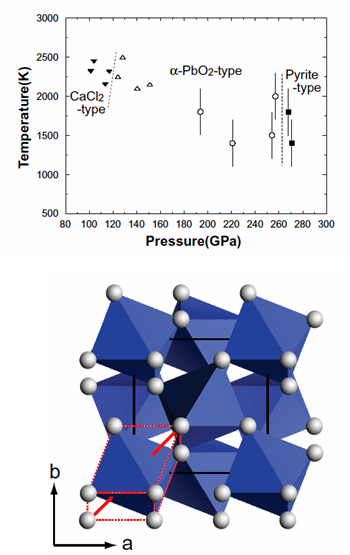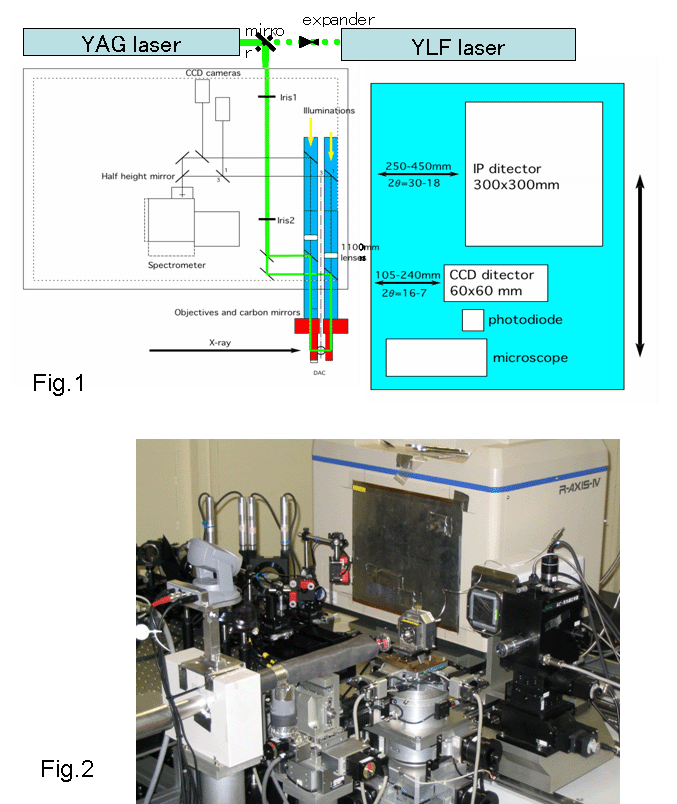The pyrite-type high-pressure form of silica
Inquiry number
SOL-0000001075
Beamline
BL10XU (High Pressure Research)
Scientific keywords
| A. Sample category | inorganic material |
|---|---|
| B. Sample category (detail) | insulator, ceramics, crystal, mineral,rock |
| C. Technique | X-ray diffraction |
| D. Technique (detail) | powder diffraction |
| E. Particular condition | microbeam (> 10 µm), high pressure (DAC), high-T (> 500 C) |
| F. Photon energy | X-ray (4-40 keV) |
| G. Target information | crystal structure, phase transition |
Industrial keywords
| level 1---Application area | Semiconductor, Chemical product, industrial material |
|---|---|
| level 2---Target | silicon semiconductor, catalysis, glass |
| level 3---Target (detail) | gate insulator, interlayer insulator, capacitance insulator |
| level 4---Obtainable information | density, crystal structure, elastic modulus |
| level 5---Technique | diffraction |
Classification
A80.30 inorganic material, M10.20 powder diffraction
Body text
The x-ray diffraction with the use of the DAC/LH (diamond anvil cell / laser-heating) system is a powerful technique to study in-situ structural observations of materials under high-pressure/temperature. Using this technique, one can observe the crystal structures of the mantle minerals or materials of the core under the inner-earth/planets condition. The figure shows the pyrite-type form of Silica (SiO2) at the condition of 268 GPa/1800K, and its phase diagram. These data reveal the fact that the silicon coordination number increases from 4 or 6 in the lower pressure phase to 6+2 in the pyrite-type (Y. Kuwayama et al., Science, 309(2005)923).
Figure. Pyrite-type form of silica and phase diagram.
[ Y. Kuwayama, K. Hirose, N. Sata and Y. Ohishi, Science 309, 923-925 (2005), Fig. 3, 4,
©2005 American Association for the Advancement of Science ]
Source of the figure
Original paper/Journal article
Journal title
Science, 309(2005)923
Figure No.
3,4
Technique
The DAC/LH (diamond anvil cell / laser-heating) technique can realize the environment of about 300GPa/4000K by delivering the focused laser beam (about 1 um wavelength) into the DAC sample chamber. Furthermore, the in-situ structural analysis can be performed under the high pressure/temperature condition by using the synchrotron x-ray diffraction.
Figure. schematic view and photograph of the LH system.
Source of the figure
Private communication/others
Description
JAMSTEC Nagayoshi Sata
Required time for experimental setup
3 hour(s)
Instruments
| Instrument | Purpose | Performance |
|---|---|---|
| Laser-heating system | high pressure/temperature | 300GPa, 4000K |
References
| Document name |
|---|
| 廣瀬敬、高圧力の科学と技術、14(2004)255 |
Related experimental techniques
Questionnaire
The measurement was possible only in SPring-8. Impossible or very difficult in other facilities.
This solution is an application of a main instrument of the beamline.
Similar experiments account for more than 30% of the beamline's subject.
This solution is application of a new instrument installed in the past two years.
Ease of measurement
With a great skill
Ease of analysis
Middle
How many shifts were needed for taking whole data in the figure?
Four-nine shifts


